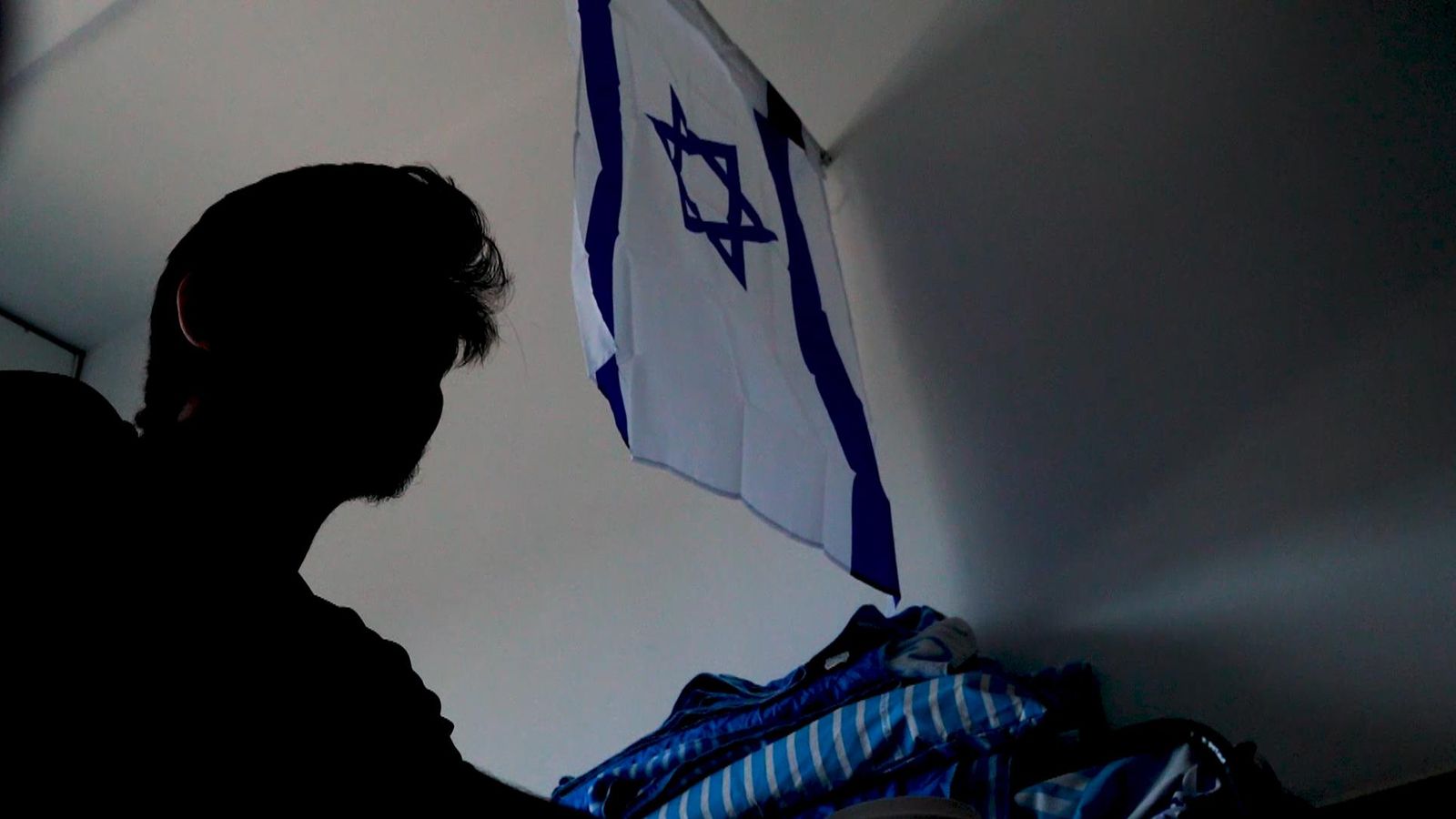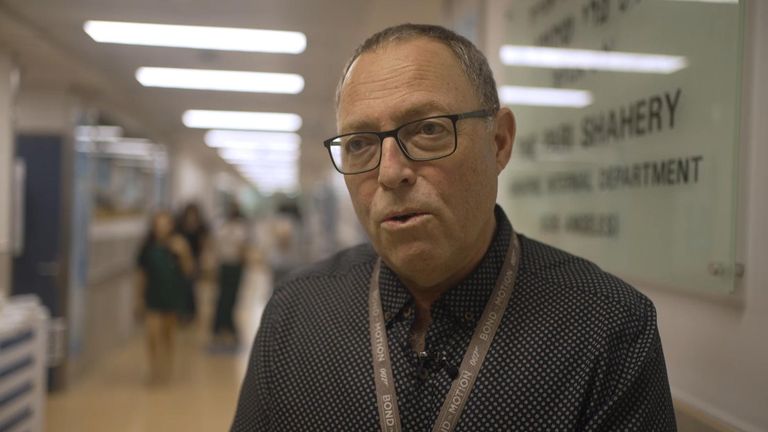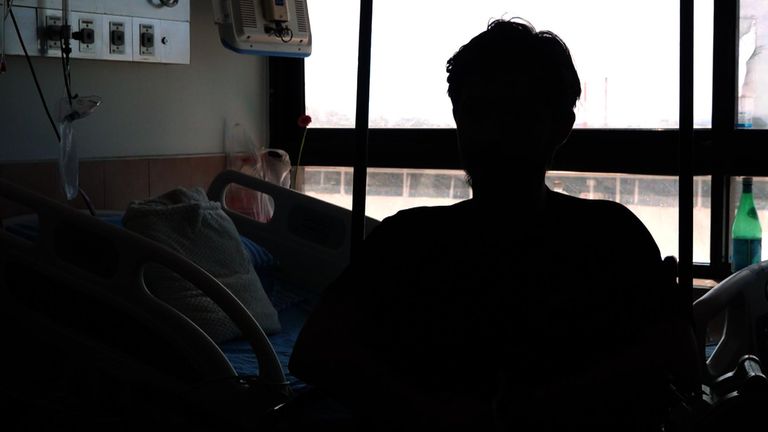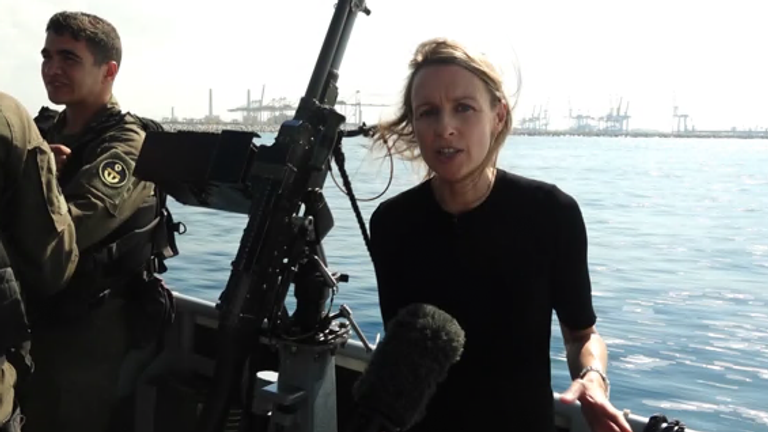Hands pulling the wheels on his wheelchair, a young Israeli soldier led the way into his hospital bedroom, both legs patched up after surgery for three gunshot wounds.
The reservist, a member of an elite unit called the counter-terror school, was wounded as he helped to recapture a rural community near Gaza that had been overrun by Hamas militants.
Two weeks into his recovery, the soldier, who asked to go by the initial “D”, said he hopes to be able to return to the frontline in Israel’s war with Hamas.
Follow live: First aid trucks enter Gaza as border crossing with Egypt opens
“Hell yeah,” the 22-year-old said, showing how he is already trying to stand up despite a particularly serious wound to the back of his left leg.
The soldier is being treated at a sprawling hospital complex on the outskirts of Tel Aviv.
In the past few days, doctors at a rehabilitation department inside the Sheba facility have expanded almost two-fold their capacity to rehabilitate wounded soldiers in anticipation of demand rising because of the war.
Professor Israel Dudkiewicz, chairman of the rehabilitation division at the Sheba Medical Centre, said the injuries that are already being treated are from bullets, shrapnel and bombs.
Asked whether the hospital would be able to handle an influx of wounded troops should Israel launch a ground invasion into Gaza, he said: “The answer is yes. We’re going to deal with how many that we need, for how long that we need. We know how to do it and we’re going to be here.”
Hardest part was ‘thinking twice before you pull the trigger’
Soldier D recalled what happened to him when he responded to an unprecedented Hamas attack on southern Israel on 7 October that killed more than 1,400 people, mainly civilians.
A reservist, he said he grabbed his uniform, body armour and weapons as news first broke about the carnage that was unfolding against communities that sit close to the Gaza Strip.
Soldier D assembled with other troops at a base before receiving the order to move towards a kibbutz called Be’eri that had been overrun.
By this point it was around 7pm in the evening – more than 12 hours after the attack began.
His commander told the men they needed to be ready for “harsh views” as they prepared to enter the site – now known to have been the location of one of the worst killings by Hamas.
“I looked straight and could see burning buildings, destroyed buildings, a lot of dead corpses – most of them were children and women,” said Soldier D.
With the militants still at large, his unit was ordered to try to find civilians who might still be hiding inside the small stone houses that made up the community of around 1,000 residents.
The soldier said he was warned some of the attackers might be dressed in Israeli security uniforms or civilian clothing, making them hard to distinguish.
The unit also had to be careful not to open fire on other Israeli forces involved in the rescue.
“You had to think twice before you pull the trigger. That was the hardest part,” he said.
Approaching a house that had flames coming out of the roof, the soldier peered in through a window to look for occupants.
He said he could make out a couple in their late 50s or early 60s. They looked to be in shock and unaware that their house was burning.
He asked the women if there were any attackers inside.
“She only answered to me with: ‘Water. I need water to drink’.”
He decided to climb through the window to help them.
“They both look at me, terrified, the faces are black, dry eyes, red eyes, dry voice, heavily damaged, people, damaged clothes,” the soldier said.
He helped to hoist them out of the window to safety as the fire still raged above.
“When I heard some heavy cracking, I took [the man], put half of his body alone to the window. My commanding officer took him and I took five or six steps backward, sprinted to the window and got outside safely. Almost fell on my face. But that’s okay…Twenty seconds, 30 seconds, maybe 40, the building started collapsing inside.”
‘I didn’t feel any pain’ – at first
In total, his unit managed to save seven civilians.
They were then instructed to search houses to hunt for Hamas fighters who might be hiding. That was when Soldier D was shot. A number of his colleagues were also shot and his commander was killed.
“I got three bullet holes – two in my left leg, in my calves. The third shot was on my right leg,” Soldier D said.
“I didn’t feel any pain [immediately]. I felt that my legs were really wet and I felt like my body weight and my plate armour and everything I had on was pushing me downwards.”
He somehow managed to run to colleagues further back, giving them his tourniquets and asking for help. He said he spoke very calmy as he did not want to cause alarm.
“They didn’t see me yelling or even panicking. And I started singing and even laughing at it. It’s just to keep the morale up.”
Once in the privacy of an ambulance he allowed his composure to slip – briefly.
“We started driving and that’s when I started yelling, touching everything, and that’s when the pain really kicked in. When the damage started talking.”
A fortnight later, though, Soldier D is smiling once more.
He said he is determined to make a full recovery, drawing on a homemade motto: “Hard work beats talent when talent does not work hard.”




